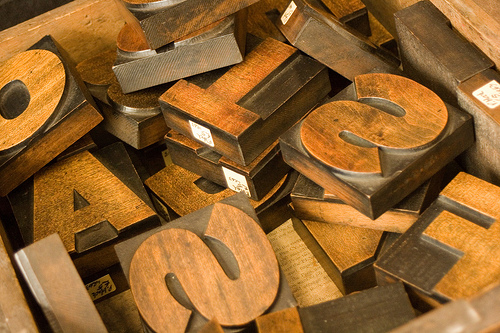 As a graphic designer, you understand the need to maintain a large font library. Whether you’re designing a logo, a website, a print advertisement, or any other graphic design, having the right fonts to use in your layout can be as important as using the right colors. But, when building your font library, it’s also important to understand your rights to use the fonts you acquire.
As a graphic designer, you understand the need to maintain a large font library. Whether you’re designing a logo, a website, a print advertisement, or any other graphic design, having the right fonts to use in your layout can be as important as using the right colors. But, when building your font library, it’s also important to understand your rights to use the fonts you acquire.
Unless you create your own fonts, you don’t technically “own†the fonts in your library. When you purchase or download a free font, you are simply acquiring usage rights for that typeface. Different font foundries will have different licensing restrictions, and its vital that you understand your rights for each font you use.
Can I share or sell fonts?
Each time you purchase a font, it will include an end user license agreement (EULA) which details your usage rights to that font. Almost all EULA’s do not allow the font to be passed on, sold, or shared with others as a basic rule. Unless your license agreement specifically allows the font to be shared, anyone requesting a copy of the font in question will need to legally acquire the font on their own.
How are fonts protected by law?
There are 3 types of protection applied to fonts in addition to their licensing agreements. Trademarks, design patent, and copyright. These protections are in place to keep fonts from being copied and redistributed as original designs.
The trademark system is the weakest form of protection, allowing only the font name itself to be protected. Hermann Zapf’s popular typeface PalatinoTM is arguably the most copied typeface in the world. Many companies made their own identical versions of it (including the Book Antiqua distributed in the past by Microsoft), but had to change the name. This means that no one is allowed to use a currently existing typeface name for a new font, even if the fonts are completely unrelated.
The design patent system is the strongest, but most uncommon type of protection. The designation is relatively rare because of the cost and effort involved, but is powerful. It is the only US legal precedent that protects the actual design – the individual shapes of the letters in a font. The Lucida font family (designed by Bigelow and Holmes) were some of the first digital fonts to be given a patent. If a designer were to copy them, even by redrawing them from scratch using pencil and paper, he would be in serious legal trouble.
The copyright system is the most commonly used type of protection, but has also been the most difficult to enforce. There is no protection for fonts or typeface designs in US copyright law.
What about freeware fonts?
Many new designers are confused by the licensing rights afforded to them when downloading free fonts. It’s important, especially when designing a logo, that the end-user familiarize themselves with the rights they have to the font they’re using. Many free fonts are limited to personal use only, and providing this typeface to a client as part of their logo design could result in legal troubles for you and your client if the font’s owner or creator finds his typeface being used unlawfully.
The best way to make sure you only use fonts that are appropriate for use in professional graphic design is to avoid downloading any free fonts that are not licensed for professional use. Graphic designers are accustomed to having large font libraries and keeping track of those that you can or cannot use gets more difficult as your library expands.
If I make a design for my client, can I send him the fonts?
The easy answer for this question is no. Unless specifically stated otherwise, you cannot share your fonts, even if your client purchases a design from you. You may give him the name of the font you used, but he’ll need to purchase usage rights for himself. The easiest way to get proper files to your client without the worry of font issues, convert all of your type to outlines before sending your design files.
Of course, not all fonts contain the same usage rights and protection, so it is very important to read the end user license agreements and copyrights related to any fonts that you choose to acquire and use in your designs.


